
Erika Zen
Erika Zen is a fourth year student in Capilano University’s Bachelor of Science program. She previously completed a Diploma in Culinary Arts from Vancouver Community College. Aside from being a student, she has worked at Earls Kitchen + Bar for 4 years, as a floor manager and server. She aspires to become a high school science and culinary teacher. With her combined academic backgrounds, she hopes to make a difference in the lives of youth by inspiring and educating them.
Nature has always been a significant part of my life. As a resident of the Lower Mainland, we are privileged to have access to nature’s beauty right outside your door. Growing up in Coquitlam, the freedom of running around was enhanced by the green space available. My family and I would often spend time at Rocky Point in Port Moody, marveling at the Burrard Inlet and the breathtaking mountains in the background. As I got older, I moved to Burnaby and soon realized the effects urbanization had on available green space. No longer could I look out and see the an abundance of greenery Coquitlam offered. Fast forward 20 years, and I am back to where I grew up, although it does not resemble the area I once remembered. There is rapid development seemingly everywhere, cutting into spaces that used to be green, with no plans to stop. Rapid urbanization, with a decline in green space, is worrisome to me as climate change and its indirect health effects continue to be a pressing issue. Canada is seeing record-breaking temperatures and heat-related illnesses, yet there is a decline in available green space. Additionally, my neighbours are occupying buildings that are not required to have air conditioning until 2025. Humans have always been part of the environment and will always be. Therefore, more eco-friendly, cost effective and sustainable development is necessary to address the concerns of rapid urbanization.
Increasing levels of greenhouse gas emissions have caused rapid changes in global temperature and climate trends in Canada today. As extreme weather events become more frequent across the country, temperatures are rising, especially in urban areas (Kingsley & EcoHealth Ontario, 2019). As a result a modern phenomenon known as Urban Heat Island (UHI) has been created in metropolitan environments (Aram, 2019). It has been reported that urban areas are typically 1.0–6.0°C warmer than non-urban areas nearby because of UHI effects (Aram, 2019) and will intensify as rapid urbanization continues. However, the impact of climate change is not only evident in the environment, but also in public health, especially to individuals of lower economic status (Kingsley & EcoHealth Ontario, 2019). Green space in urban areas has a variety of environmental benefits including improving air quality, reducing the rise in temperature and the indirect Urban Heat Island (UHI) effects (Aram, 2019), absorption of storm water runoff (Kingsley & EcoHealth Ontario, 2019) and carbon sequestration (Griffiths, 2022a). Additionally urban green space provides a variety of health benefits to individuals of all socioeconomic levels, but particularly to those a part of lower-income communities (Griffiths, 2022a). Metro Vancouver ranks second in greenness among Canadian cities, with 68 percent of urban areas characterized by trees, parks, and green spaces (Griffiths, 2023). However, since the early 2000’s the number of public green spaces including parks, street trees, gardens and roadside plantings (Griffiths, 2023) lost to urbanization by Metro Vancouver ranks second when compared to other large Canadian cities (Griffiths, 2023). As development and urbanization continue across Metro Vancouver, urban planners must create a way to expand and further green our cities to mitigate climate change while considering individuals from all socio-economic backgrounds. Although urban developers have been effective in making cities within in Metro Vancouver green, there is still a need for more green space in rapidly developing cities within the Lower Mainland as the significant increase in the cost of living is pushing residents away from the city center and thus accelerating urbanization.
What is Green Infrastructure
Green infrastructure is composed of both natural ecosystem components and human-made components that promote healthy living through a combination of vegetation, soils, and bioengineering (Metro Vancouver, 2014). Natural areas include forests, wetlands and floodplains (Metro Vancouver, 2014). While human-made components include green roofs, rain gardens, green walls, pervious paving, daylight streams and tree canopy cover which mimics natural processes before disturbance (Metro Vancouver, 2014). They emphasize conservation, utilize existing environmental features, and incorporate stormwater management practices (Metro Vancouver, 2014) into the design process to provide ecological, economic, and social benefits. The primary function of green infrastructure is to manage and treat stormwater runoff, which can reduce the risk of flooding, improve water quality, and recharge groundwater supplies (Metro Vancouver, 2014). Green infrastructure can be implemented on a variety of scales, from individual buildings and lots to entire cities or regions. It is increasingly recognized as an important tool for creating more sustainable and resilient urban environments.
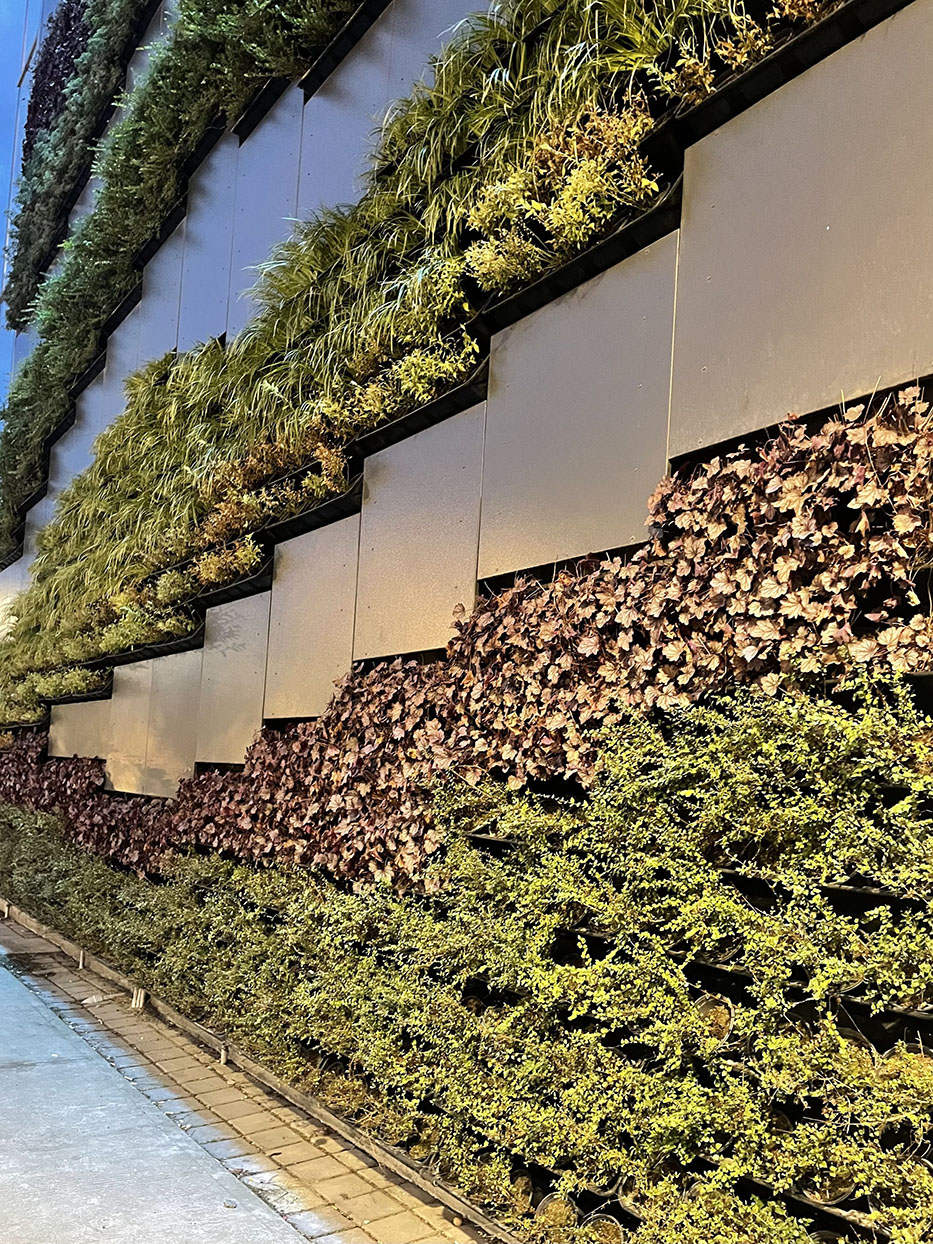
Vancouver International Airport features a 17-metre high green wall housing 27,391 individual plants (Green Roofs, 2019).
Impervious Surfaces
To create a sustainable environment in cities, it is essential to promote the use of pervious surfaces and reduce impervious ones. Impervious surfaces, such as concrete and asphalt, have negative impacts on the environment, infrastructure, and public health (Metro Vancouver, 2014). One of the primary negative impacts of impervious surfaces is on the water cycle. Impervious surfaces prevent rainwater from being absorbed back into the ground which increases the risk of flooding and erosion (Metro Vancouver, 2014). When these surfaces cover more than 50% of a city block, there is a reduction in tree canopy, and almost no canopy cover exists when they exceed 80% (Metro Vancouver, 2014). Pervious surfaces are an excellent alternative to allow water to seep through and enter the soil (Metro Vancouver, 2014) as proper cycling of water is vital for maintaining a healthy urban environment. Therefore, municipalities must ensure that their zoning bylaws allow trees to grow on adequate pervious surfaces and soil to maintain or increase canopy cover (Metro Vancouver, 2014). By taking steps to increase pervious surfaces such as rain gardens, green roofs, and permeable pavements (Metro Vancouver, 2014), cities can create a healthier urban environment.
Tree Canopy Maintenance in Cities Keeps Neighbourhoods Cool
According to UBC forestry professor Sheppard, the current heat wave is a clear indication of the importance of addressing climate change and preserving trees for their cooling and benefits to communities (Pawson, 2021). As climate change worsens, it will have severe and long-lasting consequences, making it essential to take action now to protect the environment and promote sustainability.
Cities in Metro Vancouver are enriched by the shade, cooling, stormwater collection, carbon storage, habitats, and natural beauty that green spaces like trees provide. Forests are an essential component of regional climate change resilience, both in urban and natural areas. Over the next 20 to 30 years, tree coverage in Metro Vancouver’s urban areas is predicted to decline from 32% to 28% (Metro Vancouver, 2021). Development and redevelopment of low density housing areas is expected to cause this canopy loss within Metro Vancouver which is extremely problematic because of the immense benefits it provides in combating climate change. As of 2050, Metro Vancouver plans to have a net tree canopy of 40%, an increase from 32% (Pawson, 2021). The increase in canopy cover to manage urban forests will be through Metro Vancouvers tree regulation toolkit guide for its 21 municipalities (Pawson, 2021). The toolkit provides ”must-haves” for city officials to balance development and tree canopy coverage needs (Pawson, 2021). UBC forestry professor Stephen Sheppard says a quarter of municipalities have yet to adopt tree protection bylaws (Pawson, 2021), which is why experts say the guide is desperately needed (Pawson, 2021). Consequently, approaches to preserve trees and grow canopy cover must take into account a wide range of factors, from land use to the climate suitability of tree species in the future.
Green Roofs
In addition to tree canopy, green roofs can help mitigate the challenges associated with climate change and the UHI (Metro Vancouver, 2014). Unlike conventional roofs, green roofs evaporate water and return it to the atmosphere, while non-evaporating water runs off more slowly (Metro Vancouver, 2014). As a result, this minimizes flood risks by reducing stress on sewage systems during peak flow periods. Additionally, green roofs save energy and money by reducing heat fluctuations and the need for air conditioning (Metro Vancouver, 2014). Garratt, a sustainable project manager involved with LEED coordination in new construction states, “The concept started with a professor at UC Berkeley saying we could save 20% of our energy bill on air conditioning if we just painted our roofs white, they insulate the building quite well.” Additionally, if a green roof is accompanied by solar panels, there are further savings on energy costs. Conventional roofs gain heat in the summer months and lose it in the winter, while green roofs help to reverse that by protecting the building from solar heat in the summer and insulating it in the winter. (Metro Vancouver, 2014). Furthermore, Garratt explains there are policies on maintaining bird and bee habitats on green roofs to promote biodiversity in urban areas. Bird and bee friendly plants are planted on roofs to keep the building cool, while also providing a habitat with self- maintenance. Therefore not only do green roofs reduce energy costs, they also promote biodiversity in urban areas where it is usually lacking.
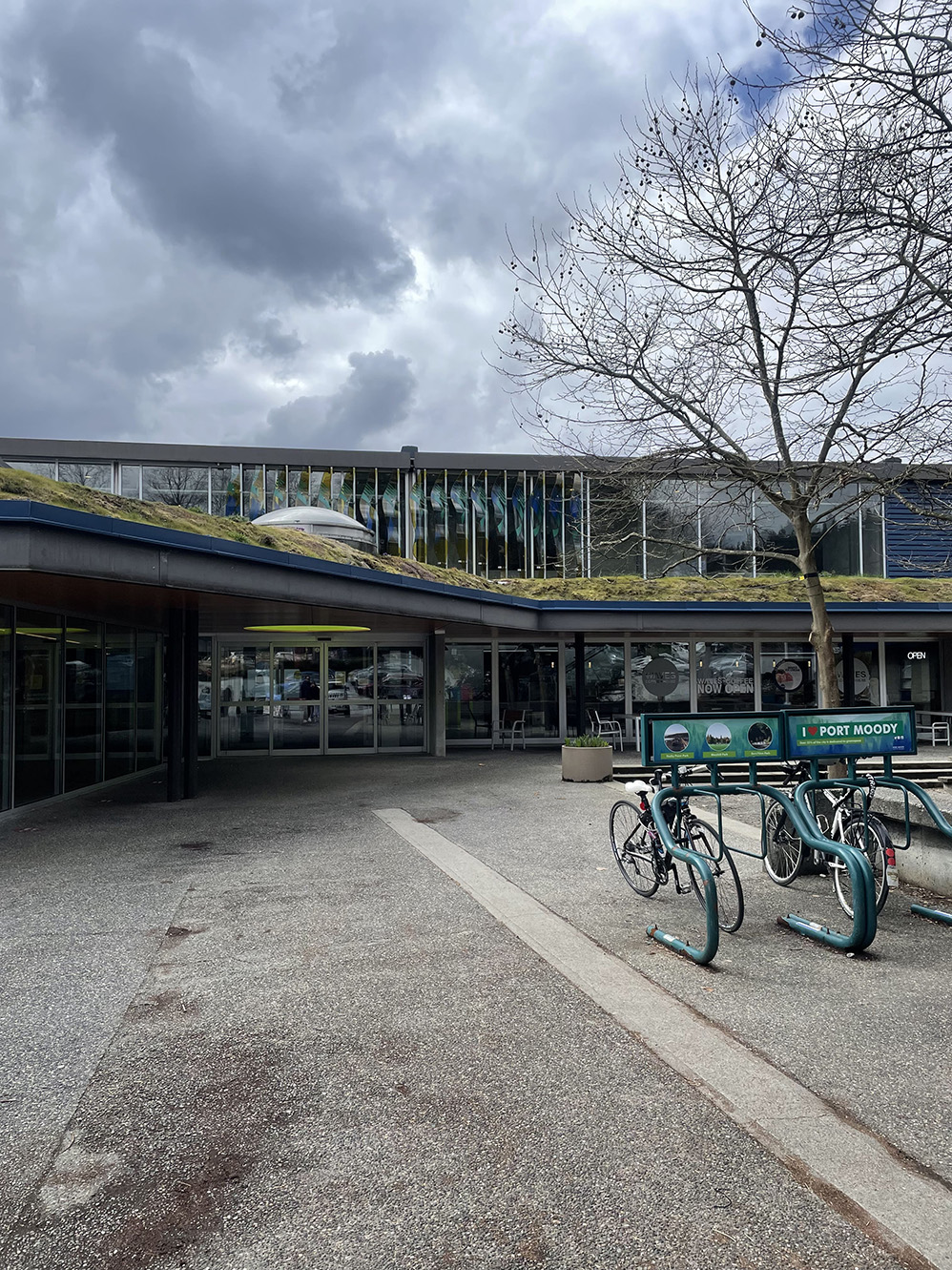
A view of Port Moody Community Center’s green roof is shown here. The green roof provides community benefits because the surrounding area is quite urbanized.
Zoning
A municipality’s zoning bylaws affect its ability to preserve trees and grow canopy cover in several ways. Zoning laws determine the size of lots, setbacks, building coverage, and how land is used (Metro Vancouver, 2021). Thus, the size and location of trees and their environmental benefits, such as reducing UHI and stormwater runoff are determined by the zoning laws of each municipality (Metro Vancouver, 2021). In most cases, a tree with a diameter of 20 cm at breast height (DBH) needs a permit to be removed. A number of cities, including Burnaby, Delta, Richmond, Port Coquitlam, Vancouver, New Westminster, Maple Ridge, and Abbotsford, are follow this rule (Metro Vancouver, 2021). However, Surrey and White Rock have a larger requirement, 30 cm DBH for the removal of trees (Metro Vancouver, 2021). A larger DBH was put in place to streamline the often slow and expensive permit process, a 30 cm diameter threshold was set. Sheppard states, “Making it easier to remove medium, maturing trees without a permit is kind of going in the opposite direction of the city’s own canopy and green infrastructure targets” (Pawson, 2021). If zoning bylaws explicitly consider the minimum pervious cover required to support trees on a lot, then the ability to either retain or replant trees with development will be greatly improved.
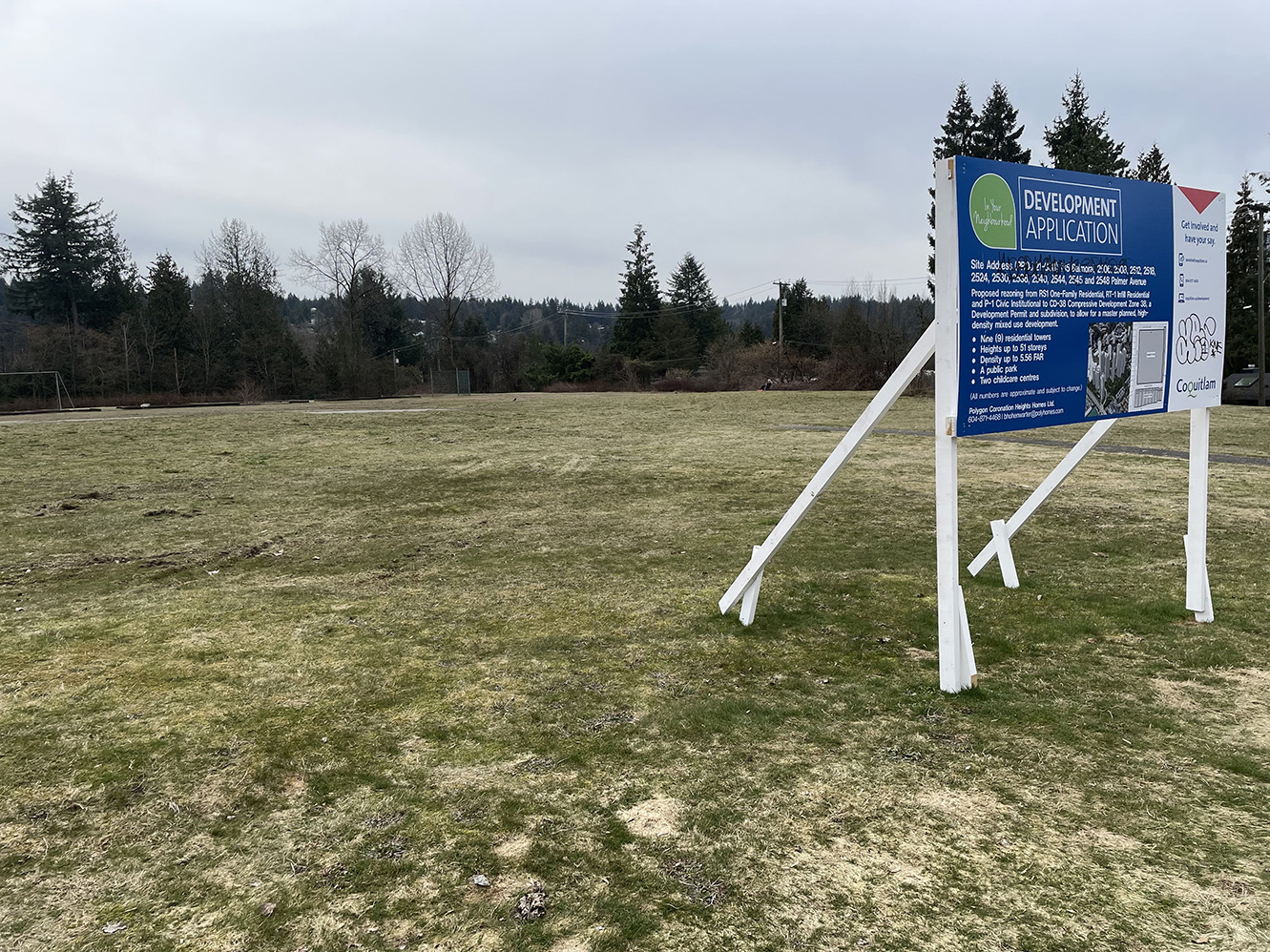
Port Moody plans to develop nine different apartment buildings on this public green space. The loss of access to this public green space will ultimately affect apartment and townhouse residents.
Co – Benefits of Urban Green Space
Urban green space offers a natural intervention with co-benefits for climate change mitigation, adaptation, and reduction of chronic diseases (Kingsley & EcoHealth Ontario, 2019). These health benefits include improved mental health, physical activity, and increased immune function (Kingsley & EcoHealth Ontario, 2019). A systematic analysis by McKinney & VerBerkmoes further supports this notion, as 42 studies found green infrastructure improves overall health (2020). In addition to the benefits above, studies have shown that exposure to green infrastructure is associated with long-term cardiovascular health, lower mortality rates, and lower baseline blood pressure (Suppakittpaisarn et al., 2017). This was supported by a study involving participants with high systolic blood pressure. Participants showed lower blood pressure after observing grasslands and trees, indicating a faster recovery after a stressful experience (Suppakittpaisarn et al., 2017). Cortisol levels were also observed to decrease among the participants with increased green space. Normal cortisol levels are critical, as prolonged excess cortisol can lead to obesity, cardiovascular disease, and gonad dysfunction (Suppakittpaisarn et al., 2017).
Green space also provides social benefits by facilitating interactions and building communities (Kingsley & EcoHealth Ontario, 2019). Studies show that greening empty lots boosts community pride by empowering residents to claim and maintain community land, which creates a sense of ownership and belonging (Suppakittpaisarn et al., 2017). Urban green spaces provide residents with opportunities to play, socialize, and connect with nature, whether it be a community garden, city park, or greenway (Kingsley & EcoHealth Ontario, 2019). Green infrastructure incorporation into urban planning and development can provide a multitude of benefits for individuals and communities alike.
Income Disparity and Access to Green Space
According to a recent study conducted by UBC, green space access in Vancouver is among the least equitable of Canada’s major cities (Griffiths, 2022b). The study used urban vegetation measurements to assess access to green space in 31 Canadian cities based on age, education, income, and race (Griffiths, 2022b). Multiple cities in western Canada showed a significant correlation between median household income and vegetation (Quinton et al., 2022). Similarly, results for Vancouver showed that access to greenery increased with income (Quinton et al., 2022). Green space access was also correlated with higher socioeconomic status in Surrey and Coquitlam (Griffiths, 2022b). According to the study, urban greening and income are positively correlated for various reasons. Higher incomes are associated with more purchasing power and therefore increased flexibility in choosing a location (Quinton et al., 2022). The second factor is that residents in high-income areas are more likely to have resources they can use to green their neighbourhoods (Quinton et al., 2022). Lastly, lower-income households tend to rent their homes, resulting in a lower level of private greening investment and limitations in their ability to green their residential property (Quinton et al., 2022).
Residential properties in Greater Vancouver climbed to $800 per square foot. This marks a 1.8% increase from November 2021 to December 2021 and a significant 19.4% increase from December 2020 (Pablo, 2022). The East Side of Vancouver saw the median price per square foot reach $896 in December 2021. This represents a substantial 35.1% increase from the 10-year average for December (Pablo, 2022). Meanwhile, Vancouver’s West Side reported a median $1,088 per square foot in December. This indicates a notable 21.7% increase from the 10-year average for December (Pablo, 2022).
Private Property
The availability and access to green space in Vancouver are affected by the ownership of the land. Privately held lands often limit public access to green space, as these areas are reserved for the property owner’s use. Garratt states, “Private green space is troublesome, because a lot of times people just want to play grass leaving people with an incredible amount of empty land, when there are people spending, $3,000 to rent a third of a house.” This can contribute to a lack of green space in densely populated neighbourhoods, particularly in areas with a high concentration of apartment buildings. (Griffiths, 2022b). A neighbourhood of interest is Shaughnessy in Vancouver. Garratt asks the important question, “Should people really have half acre lots when there’s a housing crisis”? He answers with, “No, they should not, it is just the grotesque situation of living in Vancouver, it is prohibitively expensive.” Natural features on privately held lands offer significant ecological benefits, yet these are often neglected during development. However, homeowners can play an active role in promoting tree canopy growth in their communities by planting and maintaining trees on their own properties. In line with this, Vancouver had set a target to plant 150,000 trees throughout the city by 2020 through an annual tree sale program, but only 15% of these were planted on private land (Griffiths, 2022b). To address this imbalance, the City of Vancouver’s communications department is developing various initiatives to encourage residents to plant trees on their private properties (Griffiths, 2022b).
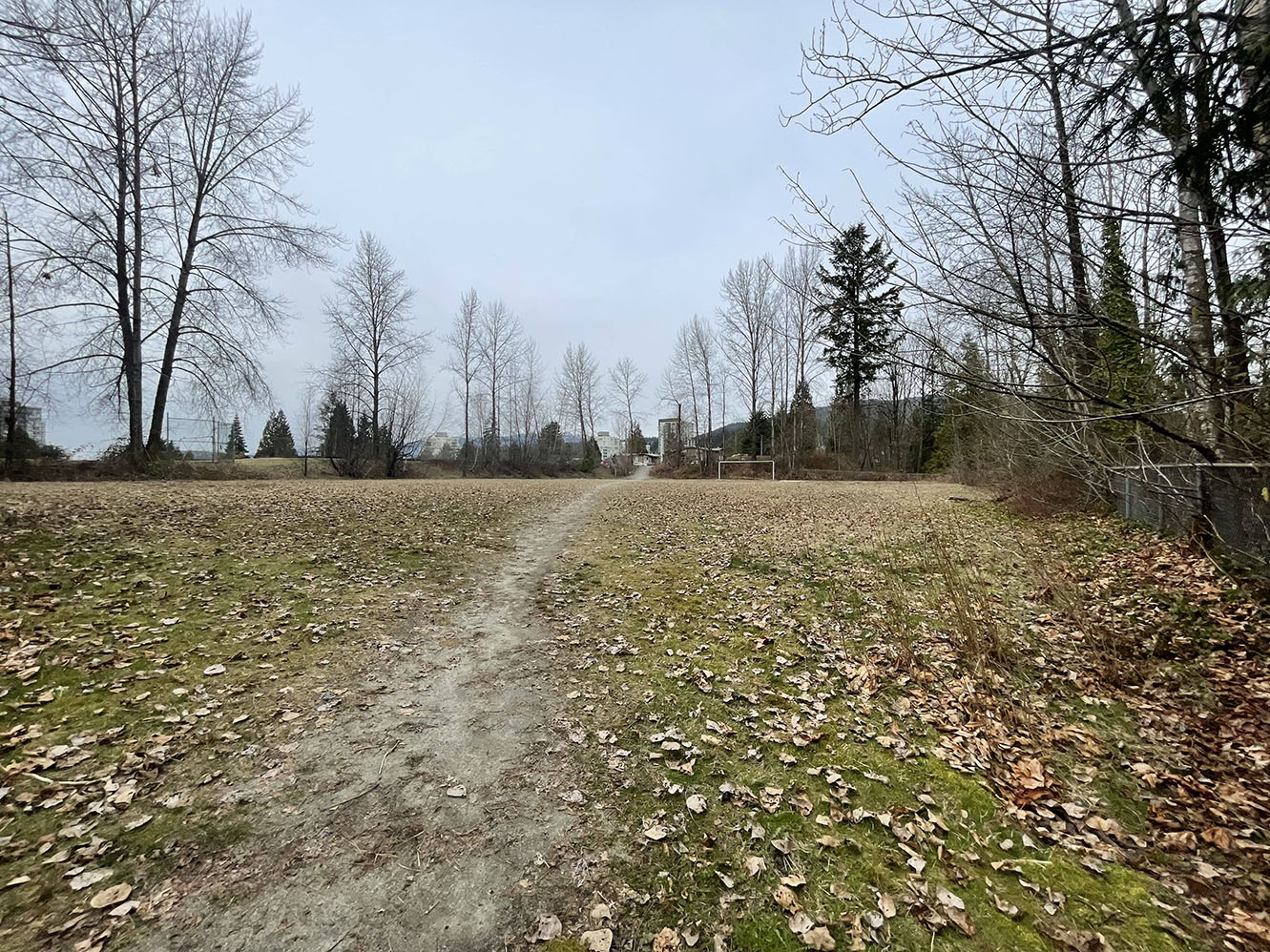
Here is another image showing how much public green space is potentially going to be converted to apartments.
Economic Benefits of Green Infrastructure
Green infrastructure in Metro Vancouver offers numerous economic benefits such as cost savings and increased property values. However, the long-term and short-term concerns regarding costs remain major challenges for green infrastructure. Nevertheless, green infrastructure presents significant environmental, social, and economic benefits over the long term, especially when compared to gray infrastructure (Metro Vancouver, 2014). This is because green infrastructure can help reduce the need for expensive gray infrastructure like stormwater management systems, thus minimizing maintenance and construction costs over time. By investing in green infrastructure, municipalities and developers can save money, as both capital and operation costs are minimized. For instance, green roofs and trees can lead to reduced energy costs as Garratt mentioned above (Metro Vancouver, 2014). Moreover, permeable pavements to replace impervious surfaces, will helps reduce the costs associated with stormwater runoff and flooding (Metro Vancouver, 2014). Green infrastructure enhances the absorption of rainwater, thereby reducing the volume of water that needs to be transported or treated (Metro Vancouver, 2014). Though the initial installation costs of pervious materials may be high, the maintenance and stormwater management savings can offset these costs, leading to an increase in the overall natural capital (Metro Vancouver, 2014).
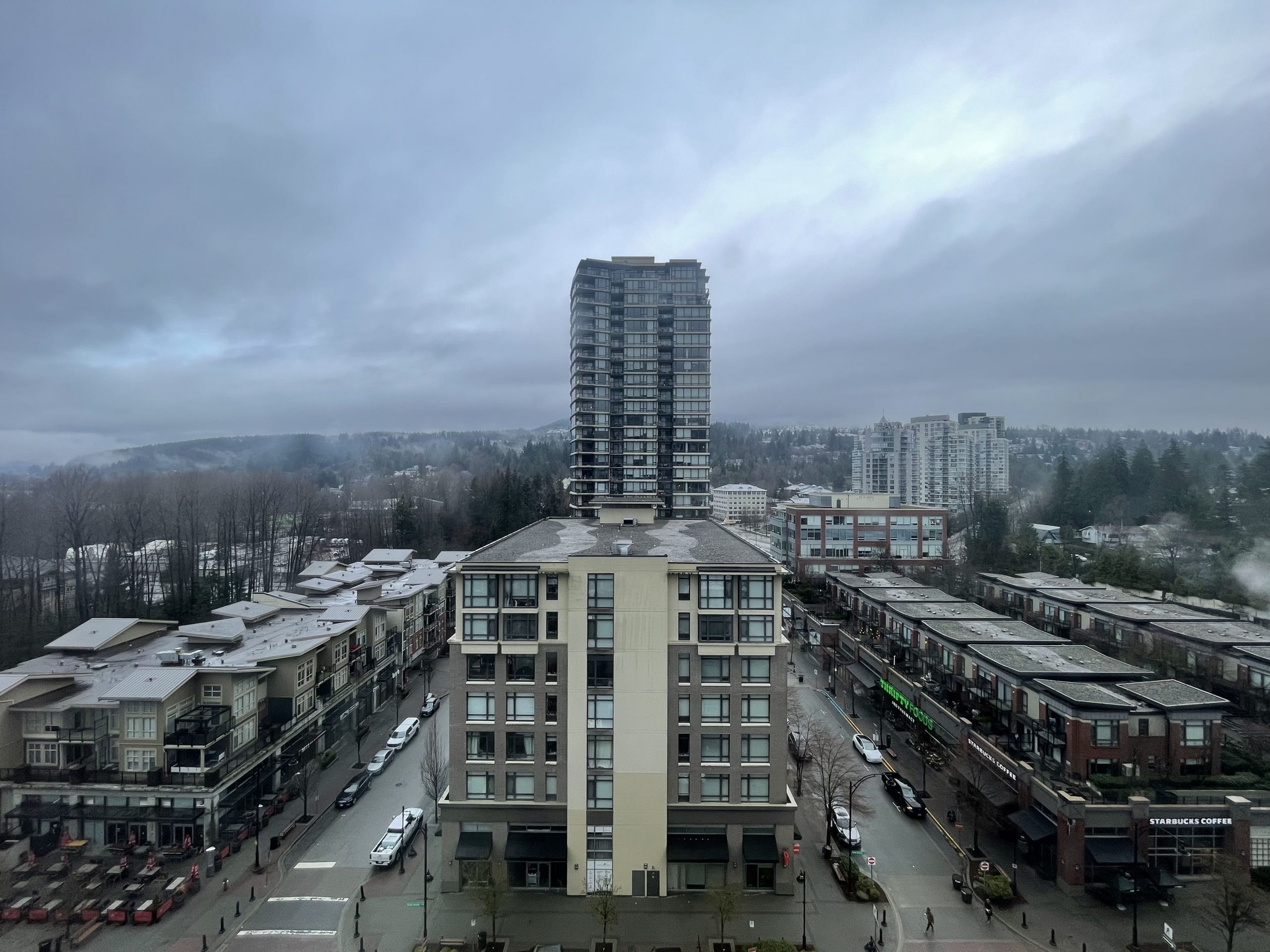
Depicts the lack of green roofs in a densely populated areas in the lower mainland.
What does the Future of Vancouver Hold?
Copenhagen, the Danish capital, has been widely recognized as the world’s greenest city due to its unwavering commitment to sustainable development (Ramos, 2021). The city’s eco-friendly urban planning efforts have been praised by experts worldwide, and in 2017, Copenhagen was awarded the prestigious C40 award for its exceptional efforts in urban ecology (Ramos, 2021). While achieving a remarkable 100% GDP increase, Denmark has also reduced its energy consumption by 6% and water consumption by 40%, demonstrating the effectiveness of its Green Business approach, which emphasizes energy consumption reduction to promote economic growth (Ramos, 2021). Copenhagen has also incorporated green spaces into its urban code, with approximately 25% of the city being comprised of green areas, and newly constructed buildings featuring green roofs (Ramos, 2021). Public involvement and legislative alignment have played a crucial role in Denmark’s successful implementation of sustainable solutions that meet the needs of all stakeholders.
Garratt also pointed to Portland, Oregon, as a model for urban development. Due to the hard cap placed on urban growth boundaries in the 1970s, developers were forced to redevelop parts of the city. By setting a boundary, farms and forests are protected and public facilities and services can be efficiently used (Koffman et al., 2021). From this model, Portland now has a wide variety of vibrant neighborhoods, as well as a large number of single-family homes. Garratt explains this, “…shows us how to rework a city, opposed to continuing to develop rings of suburban houses around the city which results in pushing people further from the city.”
Metro Vancouver can learn a great deal from Copenhagen’s and Portland’s methods for urban development. By following Copenhagen’s approach Metro Vancouver can include public engagement and community involvement in urban planning and design. Additionally, Metro Vancouver can adopt similar strategies by engaging with local communities and stakeholders to develop green infrastructure solutions that are tailored to the unique needs and contexts of different neighborhoods and regions within the city (Ramos, 2021). Metro Vancouver can take inspiration from Portland to rework the city rather than creating more urban sprawl. It is important to look at urban design globally, rather than locally. As a result, urban designers can utilize an integrative approach to create cities that are as sustainable as possible.
Conclusion
The rapid urbanization of the Lower Mainland has resulted in a decrease in public green spaces, which threatens environmental and public health. Green spaces offer a wide range of benefits, including cooling urban areas and mitigating climate change and resulting UHI effects. Therefore, it is imperative that urban planners and policymakers turn to sustainable solutions to combat the direct and indirect impacts caused by urbanization. Furthermore, green infrastructure is essential to addressing society’s climate change issues. Innovative strategies such as green roofs, vertical greening, and continuous parks and trails can be implemented in dense urban areas to create a healthy built environment. Preservation and enhancement of existing vegetation are also critical in such regions. By prioritizing green infrastructure, we can reduce climate change, improve air quality, and enhance physical and mental well-being. Moreover, Metro Vancouver can take inspiration from Copenhagen’s and Portland’s success in urban design, to creates a biodiverse, inclusive, equitable and sustainable city.
References
Aram , F., Higueras García, E., Solgi , E., & Mansournia , S. (2019, April 8). Urban green space cooling effect in cities. Heliyon. Retrieved March 19, 2023, from https://www.sciencedirect.com/science/article/pii/S2405844019300702
Green Roofs . (2019, October 8). YVR Canada Line station 4 living wall. YVR Canada Line Station 4 Living Wall. Retrieved April 5, 2023, from http://www.greenroofs.com/projects/yvr-canada-line-station-4-living-wall/
Griffiths , N. (2022a, August 28). How green is your metro vancouver city? | vancouver sun. The Vancouver Sun . Retrieved March 4, 2023, from https://vancouversun.com/news/local-news/how-green-is-your-metro-vancouver-city
Griffiths , N. (2022b, October 2). Vancouver among least equitable cities for green space: Study. The Vancouver Sun . Retrieved February 25, 2023, from https://vancouversun.com/news/local-news/vancouver-among-least-equitable-cities-for-green-space-study
Griffiths, N. (2023, November 23). Green space fell across B.C. Cities since 2000: Statcan. The Vancouver Sun . Retrieved February 19, 2023, from https://vancouversun.com/news/local-news/green-space-fell-bc-cities-since-2000-statcan
Government of Canada. (2022, June 27). Surviving the heat: The impacts of the 2021 western heat dome in Canada. Government of Canada, Innovation, Science and Economic Development Canada, Office of the Deputy Minister, Communications and Marketing Branch. Retrieved March 22, 2023, from https://science.gc.ca/site/science/en/blogs/science-health/surviving-heat-impacts-2021-
Kingsley , M., & EcoHealth Ontario. (2019, April). Climate change, health and Green Space Co-benefits. Health promotion and chronic disease prevention in Canada : research, policy and practice. Retrieved March 19, 2023, from https://pubmed.ncbi.nlm.nih.gov/31021064/
Koffman, R., Eldridge, C., Griffin, L., & Christensen, N. (2021, August 10). Urban growth boundary. Metro. Retrieved April 5, 2023, from https://www.oregonmetro.gov/urban-growth-boundary
Metro Vancouver. (2014). Green Infrastructure in Metro Vancouver. Metro Vancouver. Retrieved March 5, 2023, from http://www.metrovancouver.org/services/regional-planning/Pages/default.aspx
Metro Vancouver. (2021, May). Tree Regulations Toolkit. Metro Vancouver. Retrieved March 4, 2023, from http://www.metrovancouver.org/services/regional-planning/Pages/default.aspx
McKinney, M. L., & VerBerkmoes, A. (2020, March 20). Beneficial health outcomes of natural green infrastructure in cities – current landscape ecology reports. SpringerLink. Retrieved March 19, 2023, from https://link.springer.com/article/10.1007/s40823-020-00051-y
Pablo , C. (2022, January 3). Median price of Metro Vancouver homes increases 40 percent over 10 years to $800 per square foot. The Georgia Straight. Retrieved March 23, 2023, from https://www.straight.com/news/median-price-of-metro-vancouver-homes-increase-40-percent-over-10-years-to-800-per-square-foot
Pawson , C. (2021, June 28). Metro Vancouver creates tool kit for cities to retain, grow tree canopies | CBC news. CBCnews. Retrieved March 4, 2023, from https://www.cbc.ca/news/canada/british-columbia/metro-vancouver-creates-tool-kit-for-cities-to-retahttps://www.cbc.ca/news/canada/british-columbia/metro-vancouver-creates-tool-kit-for-cities-to-retain-grow-tree-canopies-1.6082067in-grow-tree-canopies-1.6082067
Quinton, J., Nesbitt, L., & Czekajlo, A. (2022, August 11). Wealthy, educated, and… non-millennial? variable patterns of distributional inequity in 31 Canadian cities. Science Direct: Landscape and Urban Planning. Retrieved February 25, 2023, from https://www.sciencedirect.com/science/article/pii/S0169204622001840
Ramos , J. (2021, July 8). What has made Copenhagen the Green Capital of the world? Tomorrow.City – The biggest platform about urban innovation. Retrieved February 25, 2023, from https://tomorrow.city/a/what-has-made-copenhagen-the-green-capital-of-the-world
Suppakittpaisarn, P., Jiang, X., & Sullivan, W. C. (2017, November 22). Green Infrastructure, Green Stormwater Infrastructure, and human health: A review – current landscape ecology reports. SpringerLink. Retrieved March 19, 2023, from https://link.springer.com/article/10.1007/s40823-017-0028-y
